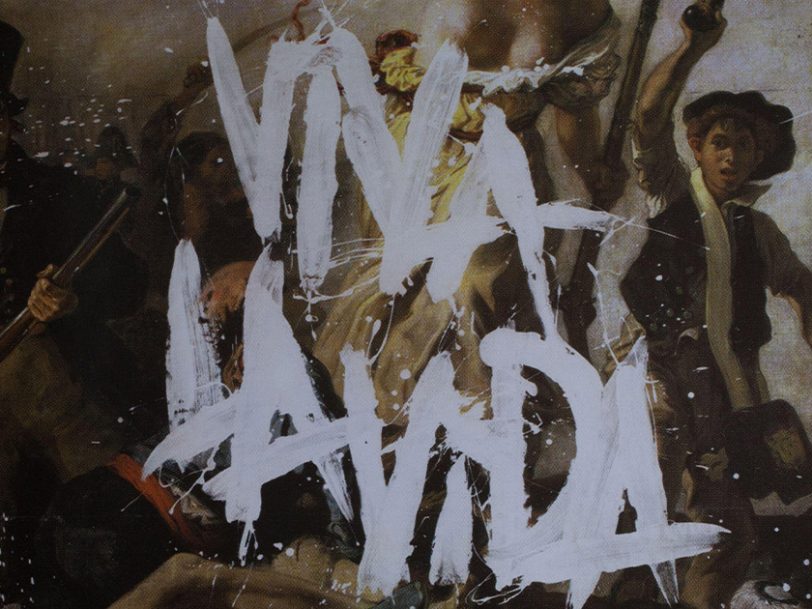Beyond its commercial success, however, Viva La Vida Or Death And All His Friends also reflected the political and social climate of its time, directly addressing themes of war, revolution and personal struggles. While still maintaining anthemic hooks and melodic appeal that characterised the best Coldplay songs, the album saw songwriter Chris Martin incorporate classical-inspired arrangements and the eclecticism of world music into his songs, drawing upon lyrical themes inspired by real-life historical events.
Here’s the story behind this iconic album, including how producer Brian Eno played a pivotal role in Coldplay’s reinvention, and how Viva La Vida Or Death And All His Friends evoked the spirit of revolution and held up a mirror to the world in the late 2000s.
The backstory: “We wanted to make a record which people couldn’t pigeonhole too easily”
It says a lot about Coldplay’s work ethic that, despite already being one of the biggest bands on the planet, they knew they had to evolve with Viva La Vida Or Death And All His Friends. Rather than repeat the same winning formula of their previous album, X&Y, frontman Chris Martin, bassist Guy Berryman, guitarist Jonny Buckland and drummer Will Champion sought to inject more dynamism and colour into their sound in order to fully realise their potential. “We reached a stage where we thought we can’t get much bigger,” Chris Martin said, “so we have to try and get better.”
After building their own recording studio, The Bakery, in Hampstead, North London, in late 2006, the group invited string arranger and composer Davide Rossi and producer Markus Dravs in to help them lay down some demos while they plotted their next sonic reinvention. “We wanted to make a record which people couldn’t pigeonhole too easily,” Guy Berryman later said. “We don’t want to be thought of as one-trick ponies.”
Taking cues from U2’s studio-based experimentation of the late 80s, Coldplay were keen to lean more heavily into art-rock for their next effort. To aid them in this endeavour, they reached out for advice from ambient pioneer and producer extraordinaire Brian Eno, who had helped David Bowie reinvent himself in the mid-70s and, along with Daniel Lanois, guided U2 to greatness on their 1987 album, The Joshua Tree.
Initially, the group simply asked Eno for producer recommendations, but they were pleasantly surprised when Eno put himself forward, telling them, “Well, I don’t mean to blow my own trumpet, but I might be the man.”
“We were looking for the new Brian Eno,” drummer Will Champion said dryly, “and we found the old Brian Eno.”
The recording: “We came up with a lot of interesting noises”
After surprising Coldplay by agreeing to produce their new album, Eno visited The Bakery from November 2006 to April 2008, and his sage-like presence quickly influenced the group’s new material. Forcing the band not to rest on their laurels, Eno encouraged Chris Martin to broaden his lyrical approach and urged each musician to pursue any idea they had, no matter how outlandish.
From putting a bass drum over Martin’s head to having the group record certain lyrics backwards and in French, Eno made Coldplay feel brave enough to try anything. “He’s like a sort of wizard-type figure, like a Gandalf or a Dumbledore, who comes in and sprinkles magic all over the place,” Martin said.
To get Coldplay to think outside the box, Eno sent them to a hypnotist who put each member into a trance-like state in a bid to snap them out of their usual habits. “It did work, actually,” Martin told Entertainment Weekly. “We came up with a lot of interesting noises, which we used. I think the whole process of getting our own place and working with Brian has been really liberating for us.”
As the new songs took shape, it was clear Martin’s lyrics were becoming more ambitious, drawing inspiration from historical events and religious allegories. Released as the lead single from Viva La Vida Or Death And All His Friends, Violet Hill was a haunting protest song that critiqued the foolishness of war-mongering rulers (“When the future’s architectured/By a carnival of idiots on show”) and the jingoism of religious fundamentalists (“Priests clutched onto bibles/Hollowed out to fit their rifles”). Though the song was not explicitly about the Iraq War, it resonated with many who were disillusioned by the ongoing conflict.




